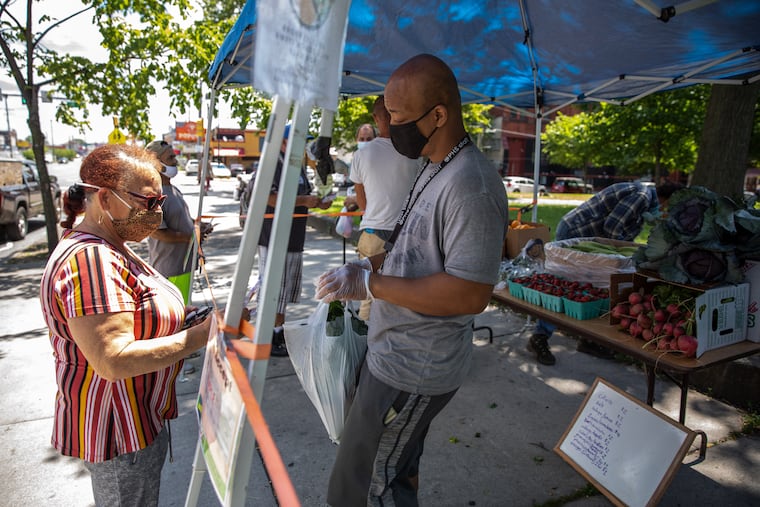To end hunger, we have to play the long game | Opinion
To find a sustainable, long-term solution that empowers communities to not just survive but thrive, we have to look at what lies in between hunger and health: nutrition security.

There’s no better day than Thanksgiving to use a football metaphor, so humor me: If your opponent is making a beeline for the end zone, ball in hand, you know what you have to do. You tackle. You have to prevent disaster. But one big play does not a championship make. To make it all the way to the Super Bowl, you have to look at the big picture, know your players, and employ a strategy that targets your opponents’ weak spots while harnessing the strengths of the team.
It’s the same with food insecurity. When people don’t have enough to eat, we know what to do: We rally around emergency food resources and hunger relief organizations — crucial safety nets for our nation’s most vulnerable individuals — to ensure that our neighbors have what they need to survive.
But my hope this Thanksgiving is that survival should be the floor, not the ceiling. Across the country, 40 million Americans continue to live in places where nourishing food is out of reach. Underresourced communities without access to nutritious food also suffer disproportionately worse health outcomes: According to a 2020 report by the White House Conference on Food, Nutrition and Health, poor diet is now the leading cause of poor health, resulting in more than half a million deaths per year. And those same populations have been the most vulnerable to COVID-19. In fact, nearly two-thirds of COVID-19 hospitalizations have been in patients with diet-related diseases like heart disease and diabetes.
» READ MORE: Food insecurity rose ‘significantly’ in households with children and among people of color, report finds
To find a sustainable, long-term solution that empowers communities to not just survive but thrive, we have to look at what lies in between hunger and health: nutrition security.
A Philly mom may be able to get a food box or visit a community fridge to prepare this week’s holiday meal, but where will she shop next week and the week after that? We need to make it easier for families to find healthy food — whether that’s at a walkable weekly farmers market where SNAP and WIC are accepted, or at a local corner store that is well-equipped to sell nutritious options, or at a grocery store that’s opened up in a neighborhood where there are no other healthy options for miles. We need to make nutritious food more approachable — working with caregivers to plan meals on a budget, meeting people where they shop to provide free nutrition lessons, connecting kids as young as preschool with the foods on their plate. We need to make healthy food more affordable — supporting more shoppers in keeping nutritious food on the table during a time when food insecurity and child hunger are increasing exponentially. With surges in the number of people receiving SNAP, incentive programs like The Food Trust’s Food Bucks program are more important than ever, and this spring, State Reps. Eddie Day Pashinksi and Angel Cruz introduced legislation to establish a statewide version of the program.
Nutrition insecurity is a complicated problem that takes many players working together with communities to create sustainable, scalable solutions. Through a combination of boots-on-the-ground services, system change, and policy advocacy, we must work together toward a common goal: disrupting the barriers that force our neighbors to choose between eating healthy and eating enough.
As you gather with your loved ones around the dinner table Thursday, think about the things you can do right now to help hungry families — you can support Philabundance and other incredible emergency food resources, you can volunteer with soup kitchens like the Sunday Breakfast Mission, or you can donate essentials to your neighborhood mutual aid programs like West Philly’s Bunny Hop PHL or the Germantown Supply Hub.
And when you wake up on Black Friday, think about the big picture: What can we do to ensure that every neighborhood has delicious, nutritious, and culturally relevant foods that everyone can afford? How can we make the healthy choice the easy choice for all Americans?
Food is the one thing that connects us all, so we owe it to ourselves and our neighbors to be in it for the long game — to support thriving, self-sustaining community ecosystems where food is plentiful, food is affordable, and food brings joy.
Mark Edwards is president and CEO of The Food Trust.